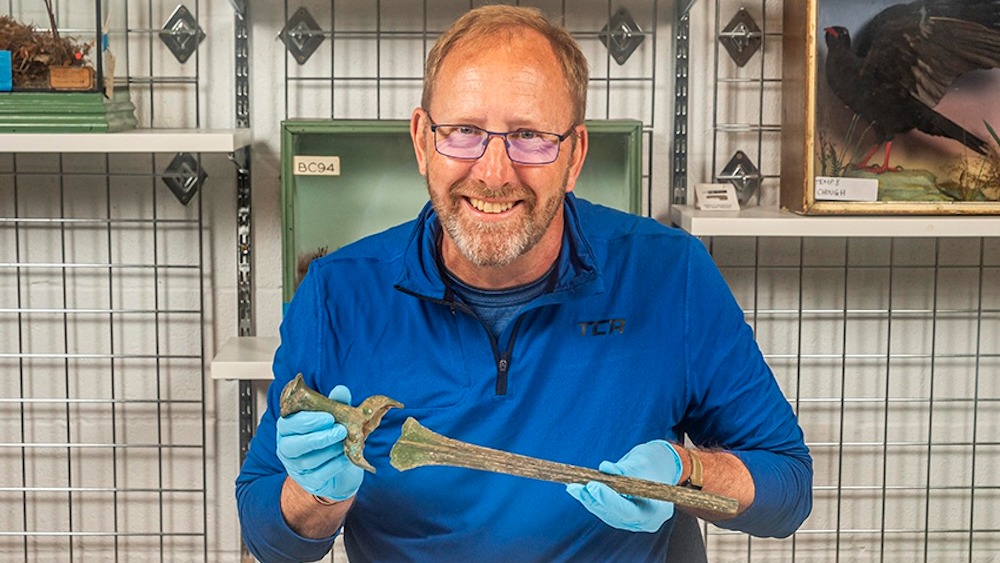
A metal detectorist in the United Kingdom recently uncovered a Bronze Age hoard that includes a sword, an ax head and jewelry.
John Belgrove made the discovery after becoming separated from a group of fellow metal detectorists during a treasure-hunting event in Dorset, a county in southwest England, The Guardian reported.
As he walked to higher ground to look for his peers, his device suddenly alerted him to a find.
"It was clear there was metal there, but I thought it would just be an old can or something," Belgrove told The Guardian. "I dug about eight inches [20 centimeters] down and found an odd-shaped object that was caked in clay."
That mystery item turned out to be a 2-foot-long (61 centimeters) rapier sword that had been broken into three pieces, likely deliberately. The sword's bronze hilt, or handle — which Belgrove described as "exceptional" — was crafted to resemble wood. The weapon is one of only three known swords of this style found in Britain.
Related: Viking sword with 'very rare' inscription discovered on family farm in Norway
Further digging unearthed a decorative arm bangle and a metal palstave ax head, a common Bronze Age tool that would have been attached to a wooden handle.
"I knew when I saw the [ax] head that it was a Bronze Age hoard," Belgrove said. "My head was in a spin. The blade of the sword was still sharp."
Belgrove handed over the treasure — known as the Stalbridge Middle Bronze Age Hoard — to the Dorset Museum, which has declared the pieces as "nationally important," according to a statement.
"This hoard is incredibly special," Elizabeth Selby, director of collections at the Dorset Museum, told The Guardian. "The rapier sword is really unusual because of the cast bronze handle. The bracelet decoration was quite unusual as well."
Selby added that the treasures offer new insight into the people who lived in this region during the Bronze Age (circa 2300 to 800 B.C.).
"Finds like this tell us about how people were traveling, meeting and exchanging ideas with others on the continent in the centuries before the Roman invasion" in A.D. 43, Selby said. "There was a farming community there and these people generated enough wealth to be able to barter for or exchange objects that others had made."
The museum plans to include the items in an upcoming exhibition, according to the statement.







